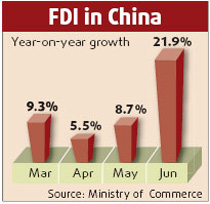The plan to duplicate a restored version of Beijing's glorious Summer Palace Park (Yuanmingyuan) has met with mixed public response. Some disgruntled netizens consider the venture as a lucrative business activity conducted in the name of public undertaking.
The duplication of a restored version of Beijing's famous Yuanmingyuan Park is now under way near Dongyang in the center of Zhejiang Province.
Yuanmingyuan, the old Summer Palace, was built in 1709 during the Qing Dynasty and served as an imperial park for the royal family until it was burned down by British and French troops in 1860. The park was further damaged in 1900 by the allied army of eight powers – Britain, France, Germany, Russia, the US, Japan, Italy and Austria. The original park is now located in what is the outskirts of the northwest section of Beijing.
The Hengdian Group, a private company, initiated in 2006 the project to create a reconstructed version of this fabulous park, which was historically known as the "Garden of Gardens" for its luxurious palaces, mansions and décor that utilized both Western and Eastern architectural styles. Their plan would create an exact replica of the undamaged park at its original size. It is scheduled to be completed in 2013. The firm estimates that the investment will cost 20 billion yuan (US$2.78 billion).
The Hengdian Sigong Working Committee was founded by Xu Wenrong, former President of the Hengdian Group, a company famous for running a huge film and television complex in the east China province of Zhejiang.
According to the committee, a news conference was scheduled to be held in Beijing to kick off their first public fundraising campaign on February 18.
However, the plan has met with mixed public response. About 63 percent of the netizens surveyed were against the project, among whom 9 percent believed that it represented a lucrative business venture and would cause destruction; 23 percent felt that the project would promote traditional Chinese culture, according to a poll.
Research indicated that profits would amount to 10 billion yuan (US$1.39 billion) over 7 years after the project is completed.
"The project is a business venture. The 20 billion yuan needed (US$2.78 billion) includes 7 billion yuan (US$973 million) for construction and 13 billion yuan (US$1.8 billion) for collecting and duplicating cultural relics," Xu Wenrong said.
"It will be a multi-functional theme park and it will bring new growth to the local economy, especially regarding tourism," Xu explained.
But, according to Xu, a specialized committee will be established overseas to collect missing cultural relics, thus making the project a public welfare undertaking.
He said that any reclaimed cultural treasures would be returned to the government after they had been duplicated.
However, many netizens wonder how the private company will be able to reclaim cultural relics looted by invading foreign troops.
In addition, the project's fundraising approach has been questioned. According to Xu, the 7 billion yuan for construction will be collected through donations and by selling shares but the funds for collecting and duplicating cultural relics will be raised only through donations from home and abroad.
The Zhejiang Hengdian Yuanmingyuan Replica Special Foundation under the China Film Foundation and the Zhejiang Foundation for Chinese Cultural Development are the two approved donation organizations used by the project to launch public donation campaigns.
All the money collected by public fundraising foundations should be used for public welfare undertakings, according to the Regulations on the Management of Foundations.
Given that the project is defined as a commercial activity, obviously, these fundraising methods and operations are against the regulations.
The project has thus been suspected of making profits in the name of public undertaking, said some insiders.
(China.org.cn by Yang Xi, January 31, 2008)


